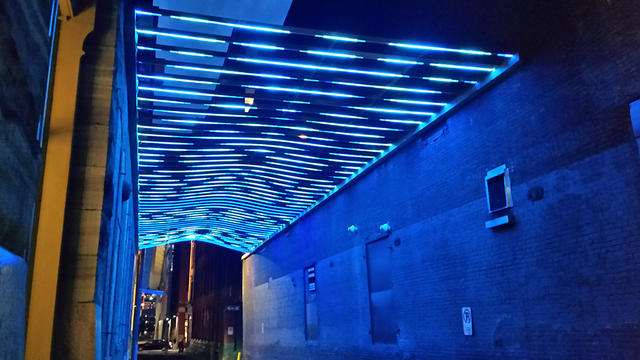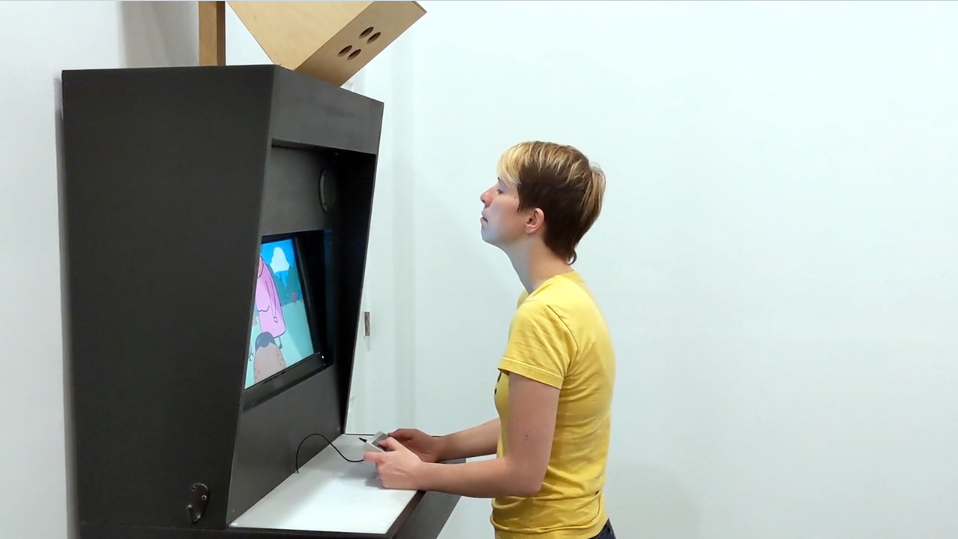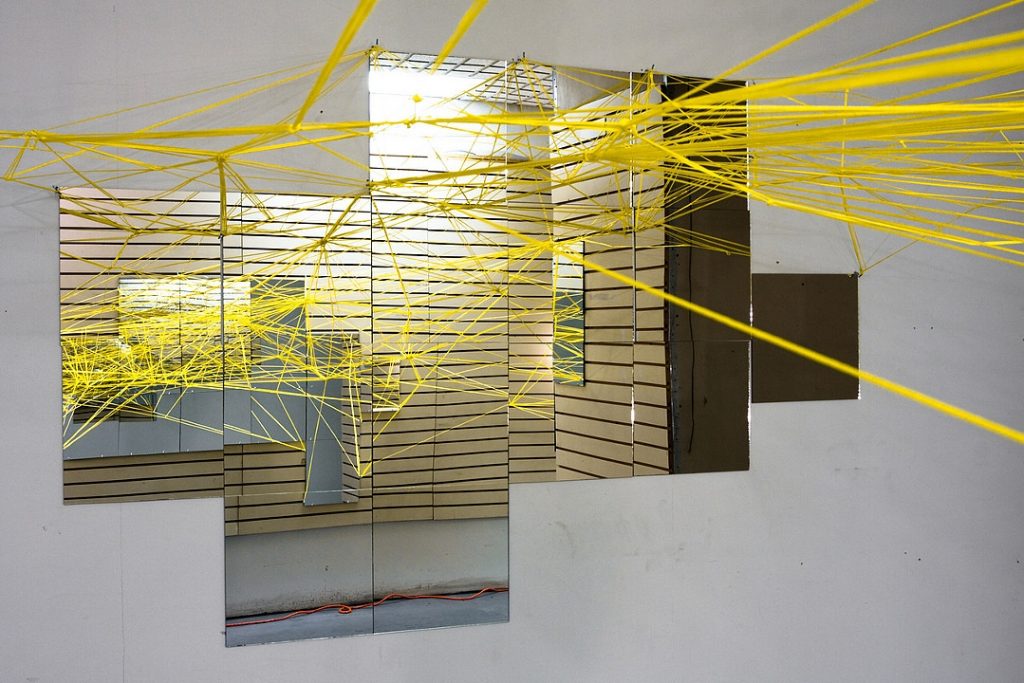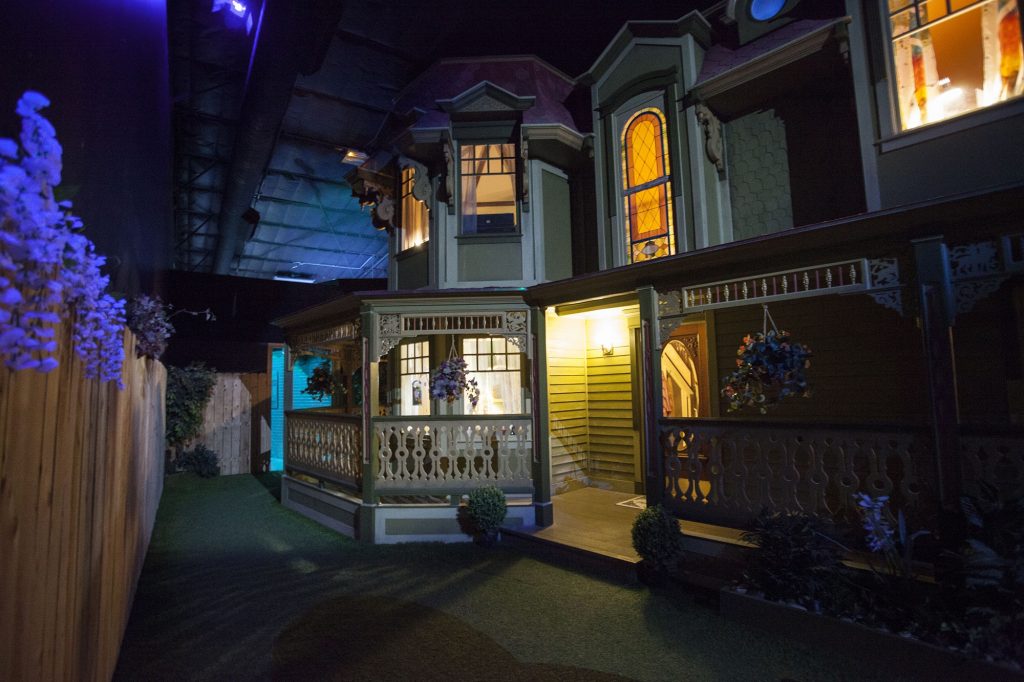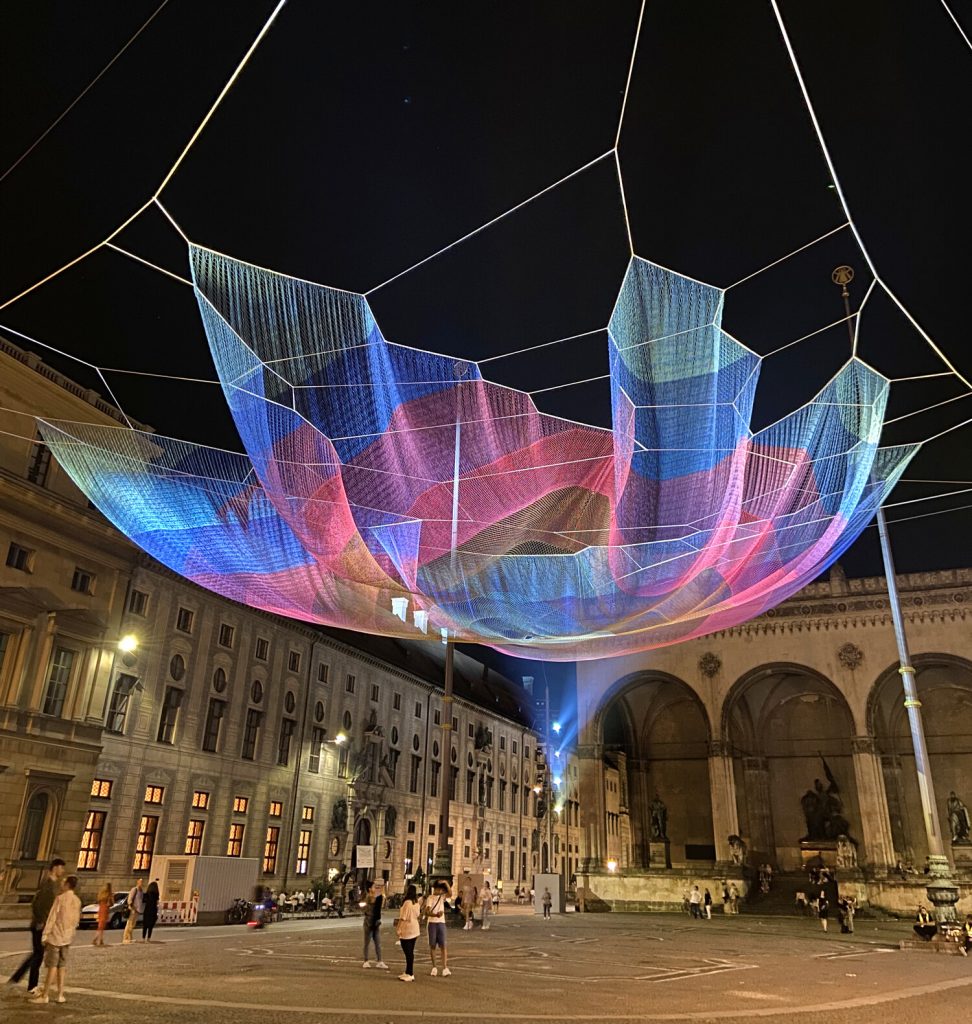

Janet Echelman creates artwork that brings together sculpture, architecture, urban design, engineering, computer science, and material science. She scales her sculptures to buildings and calls viewers to reflects on their experience and the relationships between our world’s many scales. She combines ancient craft with computer science to achieve her style. Earthtime 1.26 Munich invites viewers to consider the interconnectedness to each other and our planet, and become more aware of our sensory experience. One of many sculptures, this installation has been installed in 15 cities around the world. This physical form was first digitally modeled based on data collected that describes an earthquake in Chile in 2010 that created ripple effects and led to the earth’s daily rotation speeding up. Earth’s days shortened by 1.26 seconds. Made up of fibers, the installation hangs from buildings and is illuminated by many lights. This sculpture has over 361,728 knots! I really admire how interdisciplinary Echelman’s work is, along with the beautiful, colorful aesthetic. Her work completely transforms spaces and changes your perspective on your relationship to the rest of the world.
Title: EARTHTIME 1.26 MUNICH, GERMANY, 2021
Artist: Janet Echelman
Link: https://www.echelman.com/#/126-munich/
https://www.echelman.com/about
![[OLD SEMESTER] 15-104 • Introduction to Computing for Creative Practice](../../../../wp-content/uploads/2023/09/stop-banner.png)
